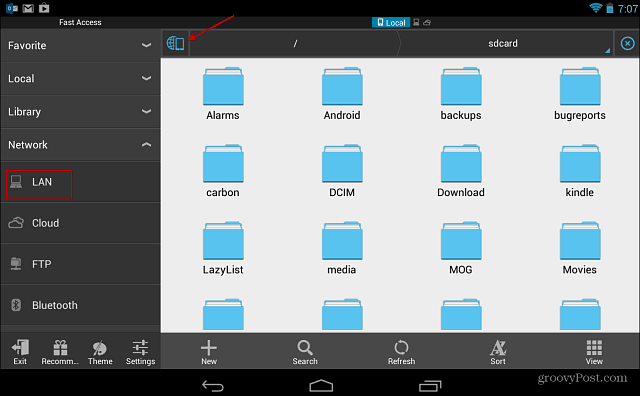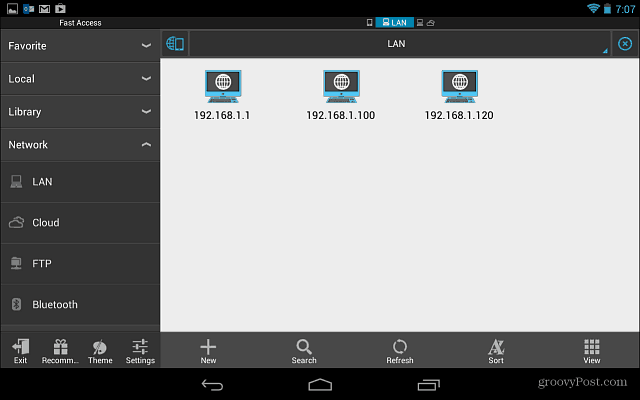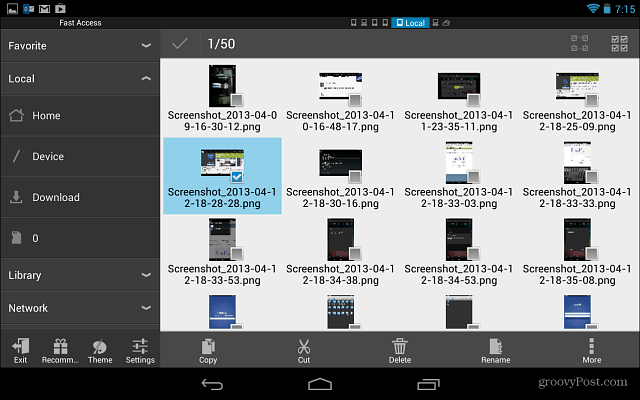- How to Share Files Between Android and Windows 10 on Your Network
- How to Access Android Files on Windows 10
- How to Access Windows 10 Files on Android
- Making a File or Folder Public
- Accessing the Files on Android
- How To Share Files Between Windows and Android Wirelessly
- Share Files from Android to Windows Over WiFi
- How to Share Files Between Android and Windows Using Free Apps
- How to share files between Windows and Android using free apps
- How to share files between Windows and Android using Feem
- How to share files between Windows and Android using AirDroid
- How to share files between Windows and Android using PushBullet
- How to share files between Windows and Android using Your Phone app
How to Share Files Between Android and Windows 10 on Your Network
With smartphones becoming a near-essential part of everyday life, you may find yourself in moments where you want to transfer files between an Android device and Windows 10. Fortunately, it’s very easy to achieve this these days!
How to Access Android Files on Windows 10
It’s worth noting first that there are plenty of ways to perform this transfer. Bluetooth is useful, as is plugging in a cable between your PC and your phone. However, this tutorial focuses on how to transfer over your Wi-Fi network.
There are plenty of apps that can achieve this, but for the sake of this article, we’ll focus on a solution that’s both easy to do and doesn’t require any software to be installed on your PC. That way, there’s no fiddly setup or bloatware – just a quick and easy transfer.
Even with these restrictions, the competition is pretty tight. However, we’re going to settle with the Sweech app for this tutorial. This is because Sweech is very quick to set up; you could be transferring files within one to two minutes of downloading it!
When you download Sweech, press the large play button that appears and give the app permissions to access your files. Then, Sweech will show you a local IP address and port.
Type it into the web browser on your PC, hit Enter, and you’ll see your phone’s file system.
Now, you can browse your phone as if it were a folder on your PC. This includes dragging files from your phone onto your PC, as well as putting files into folders on your phone. Once you’re done, tap the Stop button on the app to shut off the file transfer.
Every time you use Sweech, it will use the same IP address and port. As such, if you don’t want to keep typing in the address when you use Sweech, you can bookmark the page for quick access.
You can use the shortcuts on the left to filter content by type. You can even send data to your phone’s clipboard from your PC. Just type what you want on it, then click the blue clipboard icon to transfer it to the phone.
How to Access Windows 10 Files on Android
Accessing Windows 10 folders on Android is a little trickier. First, you need to make the file or folder accessible by outside devices.
Making a File or Folder Public
The easy way to do this is to move or copy the files over to your Windows 10 Public folder. Typically, this is located at C:UsersPublic . This folder is special because it’s automatically set up to allow other users on your network to access it.
If you want to share a folder without moving it to Public, you can set it up as if it were in the Public folder. To do this, right-click the file or folder you want to share, then click Properties.
Go to the Sharing tab, then click Share.
On the drop-down menu, select “Everyone,” then click Add. Click on Share at the bottom right.
By default, you’ll need your user credentials to access your PC’s public folders from outside. If you’d rather not enter them every time, and you trust all the devices on your network, you can instead disable the requirement and allow guests to see your public files.
To do this, type “advanced sharing” in the Start menu and select the option that appears.
Scroll down to the “All Networks” category – you may need to expand it. In this category, find “Turn off password-protected sharing” and click it, then click Save Changes.
Now you can access your public files without logging in. Be sure to turn this back on if you don’t want others on your network snooping on your files!
Accessing the Files on Android
Now it’s time to get access to those files. You’ll need a file explorer that has LAN capabilities so that it can access your PC.
If you have an app of choice, use that. For this article, however, we’ll be using FE File Explorer. We chose this app because it makes it easy to connect to your PC, whether you’re using an account or a guest login.
When you boot up FE File Explorer, tap the Plus button at the bottom right.
Here, you can enter the network details of your PC. If you’re on the same Wi-Fi network as your PC, you need not bother; just scroll to the bottom and find your PC in the neighborhood section.
The app will ask you if you want to log in to your PC or use a guest account. If you kept password-protected sharing on, select the top option and log in. If you turned it off, select the guest option.
Once done, you should now be able to navigate your PC’s public folders. Navigate to the files you want to download, then either tap the three dots next to a single file to see all the actions you can perform or hold-press a file to select multiple files to download or move.
As you can see, it is quite easy to transfer files between Android to Windows 10. If you are using Mac, you can make use of OpenMTP to transfer files from Android to Mac.
Related:
Simon Batt is a Computer Science graduate with a passion for cybersecurity.
How To Share Files Between Windows and Android Wirelessly
Need to grab a file on your PC to put on your Android device? Now with the latest version of ES File Explorer, you can do it over your WiFi network.
If you need to access a file on your PC and put it on your Android device, you can do it by connecting a USB cable. An example for this would be adding your videos to the Kindle Fire. But if you want an easier way, with the latest version of ES File Explorer (free) you can do it over your WiFi network.
Share Files from Android to Windows Over WiFi
Download and install ES File Explorer to your smartphone or tablet. If you already have it installed, make sure to update to version 3 or higher. For this example I’m using the Nexus 7, but it should be a similar experience across the board for all versions.
Open ES File Explorer and tap Network > LAN.
Next you should start seeing the computers that are up and running on your home network. If not, tap the Search button from the menu at the bottom. It will scan your network again and refresh the screen. If you’re not sure which machine you want, check out our guide on how to find your computer’s local IP address.
Just tap on the system you want and sign in with your Windows Username and Password. You can also have it remember your credentials which will make it much easier to log in the next time.
There you go! Now you can start sharing files to your PC or vice versa.
Tapping the More button brings up an impressive list of features that can used to navigate around and get exactly what you need. This method is SO much easier than having to connect your device to your computer every time you want to transfer a file.
You can also transfer files between PC and Android with an app like AirDroid. But I recommend using ES File Explorer V3 because it’s powerful and has so many things you can do with it.
How to Share Files Between Android and Windows Using Free Apps
Feem app allows users to transfer files for free between Android and Windows devices
- Free apps make it simple to transfer files between Windows and Android
- Microsoft’s Your Phone app only allows sharing of photos and texts
- AirDroid even allows users to control the phone’s camera remotely
Transferring files from your Android smartphone to your Windows PC, or vice versa, used to be a tricky affair earlier. You connected your phone to the PC via a USB cable, looked over the file system till you found what you were looking for, and then copied with the hope that nothing disconnected or hung in the process. Alternatively, you used the slow file transfer process to share files over Bluetooth, after first pairing the two devices. Thankfully, with the evolution of apps, this process of sharing files from Android to a Windows device has become an easier affair. We list a few free apps that you can try if you want to transfer files from your Android smartphone to your Windows desktop and guide you every step of the way as to how to go about them.
How to share files between Windows and Android using free apps
Whether you want to share a single file between your Windows and Android devices, or transfer a bunch of them together, it’s extremely easy to get started by following these simple steps:
How to share files between Windows and Android using Feem
The Feem v4 app allows users to transfer files, photos, videos, audio files, and apps for free. The app needs to be downloaded on the Android device as well as the Window device, for it to work. Both the devices need to be connected to the same Wi-Fi network. The company claims that the file transfer service is 50 times faster than Bluetooth and twice as fast as Dropbox. The free version of the app is riddled with ads. Those who find that annoying can pay a premium for Feem Pro that offers an ad-free experience.
How to transfer files between Windows and Android using Feem:
- Download Feem v4 on both your Android device and Windows PC from the Feem website.
- After installation, ensure that both devices are connected to the same Wi-Fi network.
- The application will assign a name to both your Windows PC and Android smartphone, and both will automatically show up in the Android/ Windows application.
- Click on the Android/ Windows device in any of the two applications.
- You can now send a single file or multiple files at once.
How to share files between Windows and Android using AirDroid
Just like Feem v4, AirDroid allows you to transfer photos, videos, files, audio, and apps between Android and Windows devices for free. It allows for selection of multiple files, and can be used to send text messages as well. File transfer, in our test, was as fast as Feem. There’s also an option to view all your phone files on the desktop app, and save them from there.

Apart from all this, there’s also a Remote Camera mode that allows you to view your phone’s camera remotely, and a View Only mode which lets you see what’s happening on your smartphone’s screen on the desktop. The free version of the app is supported by ads and only allows 200MB data transfer per month (31 days).
How to transfer files between Windows and Android using AirDroid:
- Download AirDroid desktop and Android app from the AirDroid website.
- Register on the app, and then sign-in using the same credentials on the Windows app as well.
- Ensure that you’re connected to the same Wi-Fi network.
- Your smartphone and Windows computer will shop up under the My Devices section in both applications.
- You can now drag and drop/ attach the files you want to share.
How to share files between Windows and Android using PushBullet
PushBullet app also allows for file transfers from your Android device to Windows PC, and lets you send and receive text messages as well as view your phone’s notifications. In our tests, we found file transfers to be slower than Feem.

Unlike Feem, PushBullet doesn’t allow sharing of apps, and is limited to files, photos, and videos. It also doesn’t feature the remote camera and view only modes seen on AirDroid.
How to transfer files between Windows and Android using PushBullet:
- Download the PushBullet desktop client and Android app from the PushBullet website. PushBullet offers extensions for Firefox, Chrome, and Opera, as well as a dedicated Windows App.
- Sign in with either your Google or Facebook account. Do note that you will have to use the same account on both the Android phone and Windows PC.
- The Android app will ask you whether you want to see your phone’s notifications on your computer. It will also display a similar prompt for text messages. Tap ‘Enable’ or ‘Skip’ depending on your preferences.
- Tap Remote Files on your the Android app, and your Windows PC will show up. Similarly, your Android smartphone will be displayed under Devices on the Windows application.
- Press the ‘Attach’ button to send the necessary content, and press the arrow key to send the media file to your PC.
- Check the PC app to view the file and download it onto your system.
How to share files between Windows and Android using Your Phone app
The Your Phone app was introduced by Microsoft with the Windows 10 October 2018 Update and it lets Windows users get instant access to their Android smartphone’s photos and texts. The app, however, only allows users to access up to 25 recent photos and screenshots, and nothing else.

It also doesn’t allow users to send multiple files at once. Similarly, it shows only recent messages. The biggest disadvantage of this app is that it only allows transfer of photos from Android to Windows and not vice versa.
- Install the Your Phone app or Windows and Android.
- Feed in your country code and cell phone number in the Windows app. You will receive a text message with the link for the Android app.
- Download the app from Google Play using the link.
- Once installed, click ‘Connect my PC’.
- Sign in with your Microsoft account on both the Windows and Android App. On the Android device, allow all permissions and say ‘Yes’ to ‘Ignore battery optimisations’ if so desired.
- Open the Your Phone app on your Windows 10 machine.
- You will be able to access Recent Photos (including camera roll, screenshots) and Text messages (SMS messages).
Other simple ways to transfer files between Android and Windows
A special mention must be given to cloud storage services like Dropbox, OneDrive, We Transfer, Google Drive, and more. These services allow you to save files on to the cloud, and access them from any device, as long as you’re signed-in with the same credentials. All of these services offer limited free storage space, and after you’ve reached that limit, you can choose from various paid plans.
For the latest tech news and reviews, follow Gadgets 360 on Twitter, Facebook, and Google News. For the latest videos on gadgets and tech, subscribe to our YouTube channel.
























